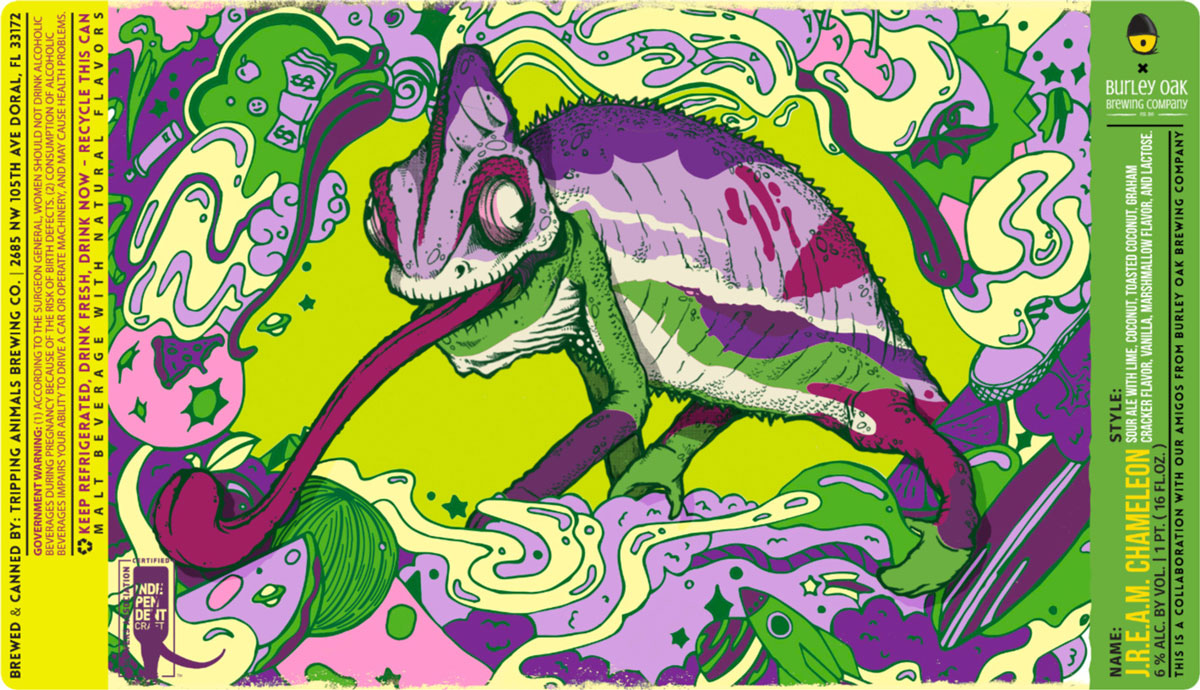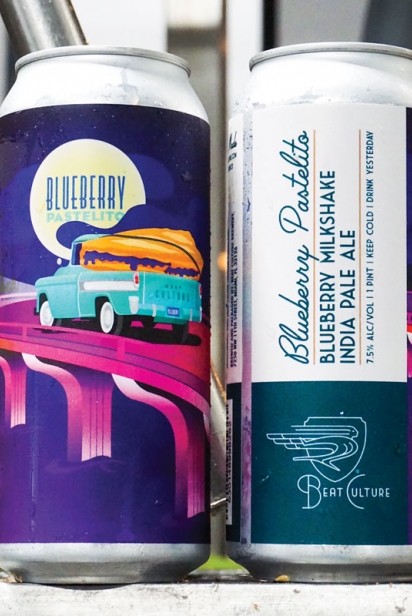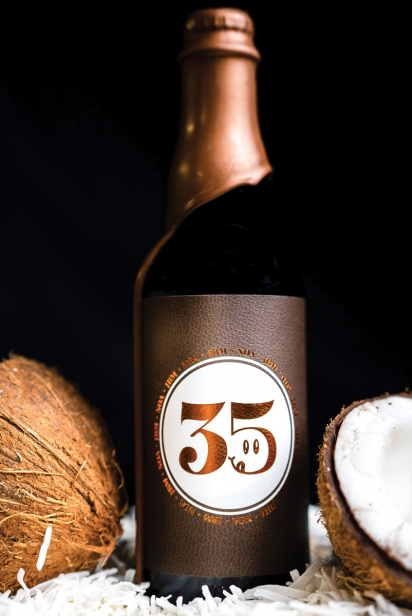Is Any Beer ‘Extreme’ Now?
Like today, there was unbridled enthusiasm a decade ago about finding the most “out there” beers, but extreme was completely tame by today’s standards. If a shipment of Dogfish 120-Minute IPA (a 16% IPA continuously hopped for 120 minutes) hit local retailers, word spread quickly and they were often all sold before they hit the shelves. If a rare bourbon barrel-aged imperial stout appeared, it was immediately snapped up. Now the shelves are filled with these on any given day. A cream stout is a traditional style, but if you tried to explain why Left Hand’s Milk Stout had milk sugar “lactose” in it, people thought it was bizarre. Breweries like Short’s in Michigan were making beers that tasted like desserts. It was crazy at the time, but it helped to shape local trends as Funky Buddha, just a small brewpub and hookah lounge at the time, started to experiment with food-inspired beers.
The underground trade of beer was exciting, too. Live in Indiana? FT, 3F Dark Lord ISO: CC Hunaphu or Westie 12. Translation: “For trade, Three Floyds Dark Lord. In search of Cigar City Hunaphu or Westvleteren 12.” Just make a virtual handshake over the web, pack up your beers and ship them across the country in hopes that your recipient returns the favor.
The online beer trade is still active. But now, just about every brewer experiments with non-traditional ingredients or barrel aging. Brewers produce not just one IPA, but an array of Hazy IPAs, Brut IPAs, Imperial IPAs, Session IPAs, Fruit IPAs. So what’s the new generation of beer elite now clamoring for?
Hazy IPAs (New England IPAs)
Like the aforementioned Dogfish 120-Minute IPA, craft beer drinkers have always been searching for more hops. What makes these Hazy IPAs so different is how thick and turbid they are. Brewers used to pride themselves in how clear they could make the beer. It seems Boulder Beer, founded almost 40 years ago, was ahead of the game when they brewed Hazed and Infused Pale Ale decades ago. Brewers discovered that by not filtering the beer nor worrying about its clarity, you can inject the beer with a whole lot of hop flavors. Many breweries use as much as 10 times more hops than in traditional IPAs, resulting in a beer that looks like orange juice and is packed with tons of huge tropical hops flavors. All of the proteins, yeasts and hop particulate in the beer make these beers very, very unstable and perishable. The fresher the better, so get them fast, trade them quick and don’t wait too long to drink them. Breweries like Tree House and Trillium have built their businesses on creating these types of dank beers. Local breweries like Civil Society and Calusa have created some noteworthy hazy IPAs, and nearly every brewery has at least one in their taproom.
Pastry Stouts
Rich stouts aren’t new, but Pastry Stouts have been pushing the limits. In the past, the goal with many stouts and imperial stouts was balance. It was impressive if you could create a 10+% imperial stout and still make it drinkable, like Oskar Blues Ten Fidy. These beers had a lot of malt, alcohol, hops and calories. Today, they almost seem light compared to the new age of pastry stouts. Brewers are seeking high levels of residual sugars and sweetness to create a decadent dessert quality. As these beers are brewed, an excess of unfermentable sugars are intentionally produced. Once fermentation is done, not all of the sugar is converted to alcohol and the beer doesn’t dry out. Like the base layer of cake or pie crust, breweries add any crazy mix of ingredients: almond, coconut, chocolate, fruit, marshmallows and so on.
Milkshake IPAs
Lactose isn’t just for stouts any more. Unlike a traditional IPA, a Milkshake IPA is not bitter – quite the opposite. Like Hazy IPAs, many brewers use a mix of oats, wheat and other grains to give the beer a smooth mouthfeel. They add tropical hops at the end of the boil, which impart all of the aromatics and fruit qualities of the hops without the bitterness. Brewers then add milk lactose and fruits to mimic the other qualities of this blended dessert. The final product couldn’t be more different than its traditional predecessor, sour beers.
In the past 10 years, there’s been a huge resurgence in innovating sour styles. Breweries seek sour qualities through barrel aging, sour mashing, the use of lactic acid and sour fruits. Ironically, breweries have now begun using lactose to balance the sour qualities of these beers, created fruit sour beers with lactose. This is like making a really sweet lemonade, countering the tartness with sugar. Milk sugars are finding their ways into all types of beers.
Like all trends, everything comes full circle. Ten years ago, beer geeks looked down on a brewery floating blueberries in pints of beer. Now they’re waiting in line for them. Everyone is pushing the boundaries of what beer should be. The German Reinheitsgebot (the German beer purity law) carries no weight. Will we end up where we started? Will beer aficionados soon be overjoyed over traditional English milds, Czech Pilsner or Cask beer? Those are the ones I get excited to see on a beer’s tap list. Maybe I’m old fashioned – or maybe it’s the future.






